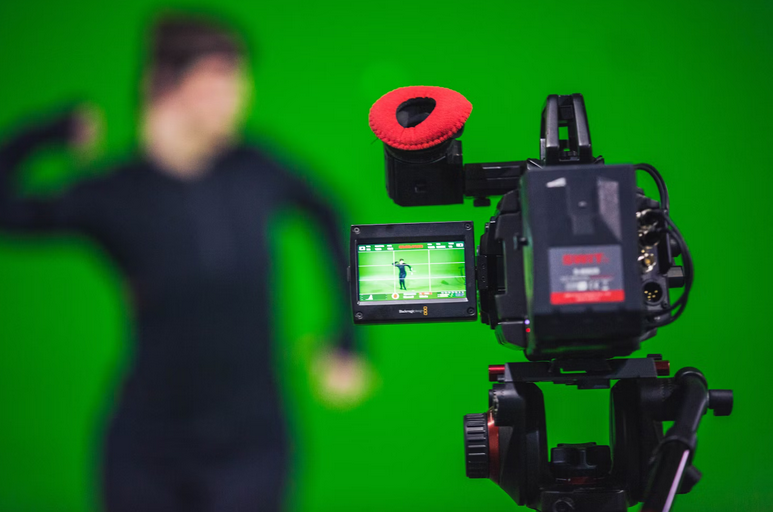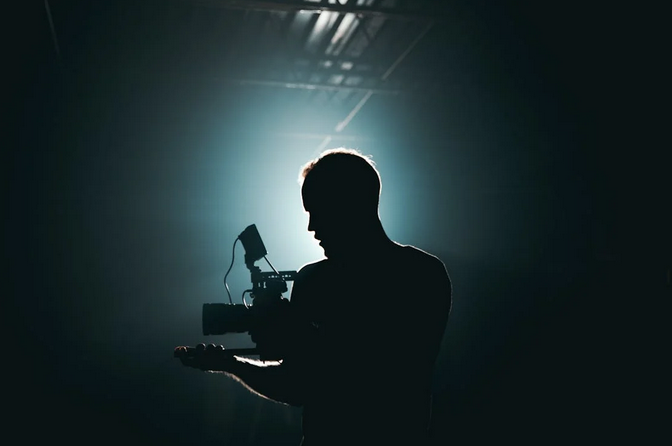Behind the Screens: Unveiling the Tech Revolution Reshaping Hollywood
Welcome to the future of filmmaking. As the sun sets on traditional movie-making, a dazzling new era dawns—one where cutting-edge technology is not just an accessory but the very lifeblood of Hollywood. From AI-driven scripts that spark creativity in ways we’ve never imagined to virtual reality experiences that transport audiences right into the heart of their favorite stories, this tech revolution is reshaping every facet of Tinseltown. In “Behind the Screens: Unveiling the Tech Revolution Reshaping Hollywood,” we’ll take you on an exhilarating journey through the innovations transforming how films are made, marketed, and experienced. Get ready to discover how these groundbreaking advancements are revolutionizing storytelling and redefining what it means to be a filmmaker in today’s digital age! Buckle up—this is one cinematic ride you won’t want to miss.
Virtual Production: The Future of Filmmaking
Virtual production is one of the most exciting technological innovations that’s changing the way movies are made. In the past, filmmakers would rely heavily on green screens and post-production effects to create large-scale sets and digital environments. While this was effective, it was also incredibly time-consuming and expensive. Enter virtual production: a game-changer that blends physical and digital elements in real time. With virtual production, filmmakers can use giant LED walls (like the ones used in Disney’s The Mandalorian) to create lifelike, interactive environments that actors can engage with on set. This technology allows for real-time rendering, so what you see on screen is essentially what’s happening in front of the camera—no need for a green screen or endless post-production work.
This new approach makes filming more efficient and immersive for actors, and it drastically reduces the cost and complexity of building massive physical sets. Plus, it opens the door for some truly out-of-this-world scenes that were once considered impossible.
CGI and Special Effects: Beyond the Imagination

It’s hard to imagine a modern blockbuster without CGI (Computer-Generated Imagery) or special effects. Whether it’s creating mythical creatures, stunning explosions, or entire digital worlds, CGI has become an essential part of filmmaking. But what’s exciting today is how much more advanced CGI has become. Thanks to faster computing power and more sophisticated rendering tools, filmmakers can now create incredibly realistic visual effects that are indistinguishable from reality. Think of movies like Avatar or Avengers: Endgame, where the characters interact with photorealistic environments and creatures that look like they were shot on location, even though they’re completely digital.
Moreover, technologies like motion capture and facial recognition have made CGI even more precise. Actors can now perform in full-body motion capture suits, and their movements are translated into highly detailed, animated characters. This allows for more dynamic and expressive digital performances, adding an extra layer of realism to animated films and visual effects-heavy scenes.
AI and Machine Learning: Editing and Beyond
Artificial Intelligence (AI) is not only transforming the way movies are created but also how they’re edited. In the past, editing a movie was a painstaking process that took weeks or even months. Today, AI-powered software can speed up the process by automatically analyzing footage and suggesting edits based on patterns and content. For instance, AI can help with tasks like color grading, identifying the best takes, and even adding visual effects where needed. Machine learning algorithms can also analyze audience preferences, helping filmmakers and producers make data-driven decisions about everything from casting to storylines.
But AI is also pushing the envelope in other ways. Deepfake technology, for example, allows filmmakers to digitally alter or create lifelike versions of actors. While this can raise ethical concerns, it has huge potential for things like resurrecting iconic actors for a scene or seamlessly de-aging performers.
Augmented Reality (AR) and Virtual Reality (VR): Immersing Audiences
While CGI and VFX are transforming production, AR and VR are changing how audiences experience movies. Virtual reality (VR) allows moviegoers to step inside the story and interact with their surroundings in a fully immersive 360-degree world. Think of it as watching a movie from within the movie, where you can explore the environment and see things from different perspectives. Augmented reality (AR), on the other hand, enhances the real world by overlaying digital elements. Imagine using your smartphone or AR glasses to watch a movie scene unfold right in your living room. This technology has the potential to blur the lines between fiction and reality, giving audiences a new way to engage with movies.
Some filmmakers are already experimenting with VR and AR to create interactive movie experiences, where viewers can influence the storyline or interact with characters in real time. As these technologies improve, we could see a whole new genre of interactive films that break the traditional cinematic boundaries.
Streaming and Interactive Content: Movies on Demand

The rise of streaming platforms like Netflix, Disney+, and Amazon Prime has already transformed how we watch movies. However, technology continues to drive new forms of storytelling within these platforms. Interactive movies, like Bandersnatch (a part of the Black Mirror series), allow viewers to make choices that affect the plot, giving a whole new level of engagement and replay value.
This trend of interactive content is expected to continue, as filmmakers experiment with blending traditional movie narratives with interactive, choose-your-own-adventure elements. The future of film might not just be about watching a story unfold—it could be about experiencing the story in a more personal, customizable way.
The Future of Film: What’s Next?
The tech revolution in Hollywood is far from over. As technology continues to advance, we can expect even more groundbreaking changes in how movies are made and experienced. From AI-generated scripts to real-time collaboration between filmmakers across the world, the possibilities seem endless. We may also see more immersive, hyper-realistic experiences, where films blend seamlessly with video games and virtual worlds. Think of a future where movies aren’t just something you watch, but something you live, where you can interact with characters and explore settings in a fully immersive digital environment.
Technology is reshaping Hollywood in ways that were once the stuff of science fiction. From virtual production to AI-enhanced editing, the possibilities for storytelling are expanding every day. As filmmakers continue to push the boundaries of what’s possible with cutting-edge tech, one thing’s for sure: the future of movies is going to be more exciting, more immersive, and more tech-driven than ever before.


